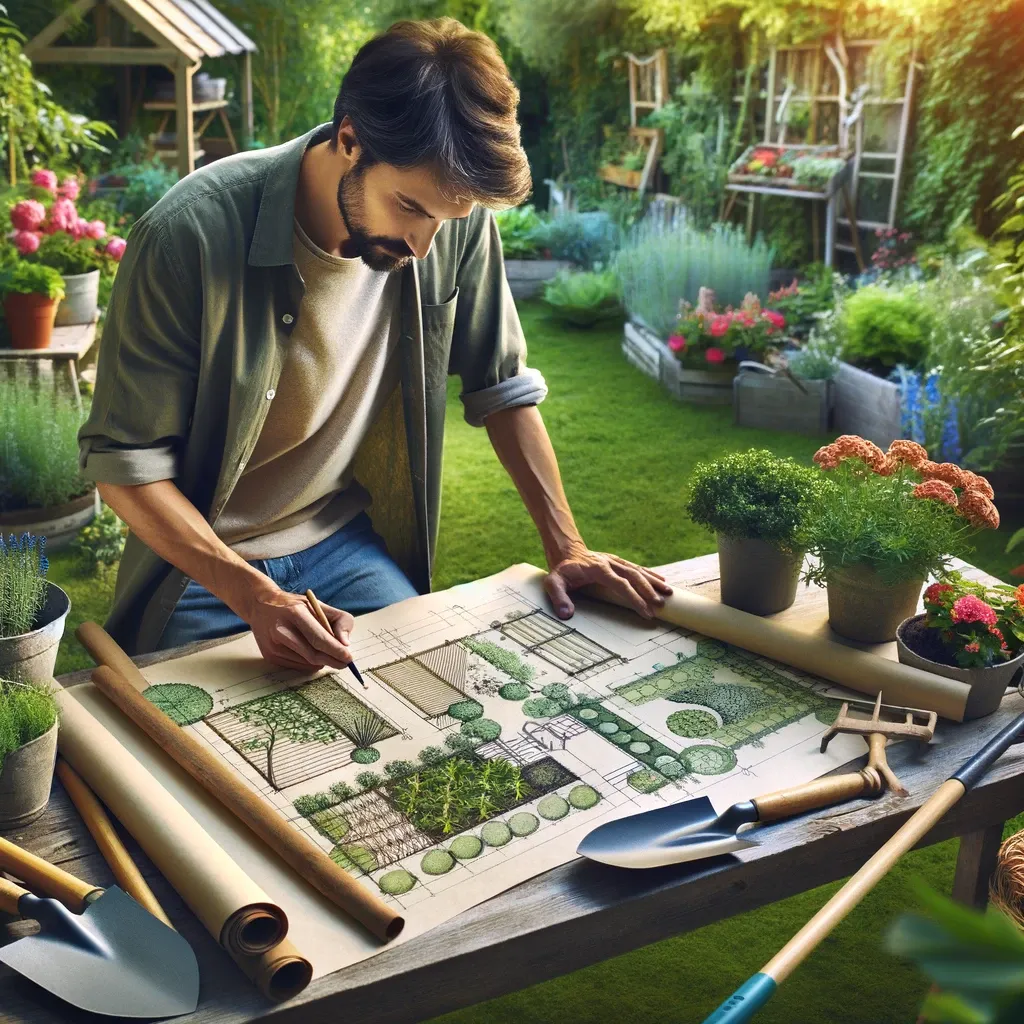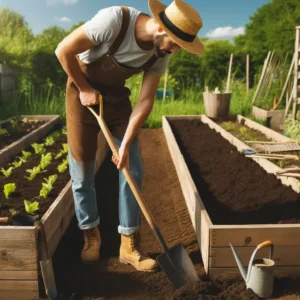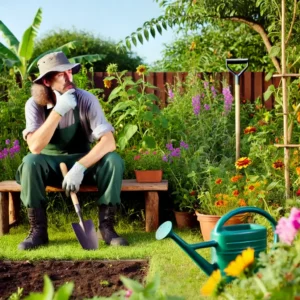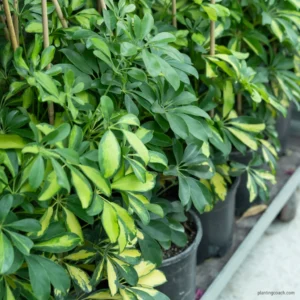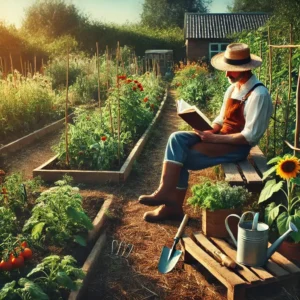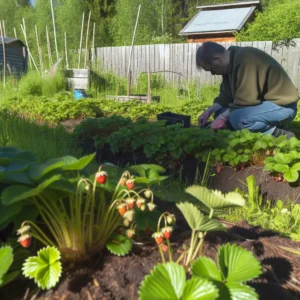Planning the layout of your garden is a crucial step that can significantly impact its success and enjoyment. A well-designed garden layout improves the overall attractiveness of your outdoor space and ensures efficient use of resources, better plant health, and higher productivity. Whether you are a beginner or an experienced gardener, understanding the principles of garden layout planning can help you create a beautiful, functional, and sustainable garden.
This article will explore 8 Garden Layout Ideas Suitable for Any Space, providing tips and insights to help you choose the best layout for your space and needs. From traditional row gardens to innovative vertical gardens, each layout offers unique benefits and can be tailored to fit different environments and gardening goals. By considering factors such as space, sunlight, soil, and plant compatibility, you can design a garden that thrives throughout the growing season and brings you joy year-round.
8 Garden Layout Ideas Suitable for Any Space
Before diving into specific garden layouts, it’s essential to assess and understand your available gardening space. Start by measuring the dimensions of your garden area and noting its shape. This initial assessment will help you determine what types of layouts are feasible and how to optimize the space. Consider the amount of sunlight your garden receives throughout the day, as different plants have varying light requirements. Observe any shaded areas created by buildings, trees, or other structures. Soil type and drainage are also critical factors; conducting a soil test can provide valuable information about pH levels and nutrient content, allowing you to amend the soil as needed.
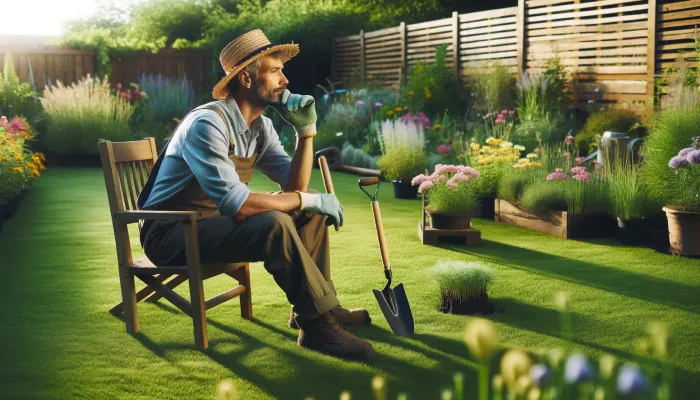
Accessibility is another key consideration. Ensure there are clear pathways for walking and working, and think about how you will reach all areas of the garden for planting, watering, and harvesting. If mobility is a concern, raised beds or container gardens can make gardening more accessible. By thoroughly understanding your space and its characteristics, you can make informed decisions about the best layout options for your garden.
Now let’s dive deep into the top 8 ideas for your garden layout in detail:
Traditional Row Garden Layout
The traditional row garden layout is one of the most common and straightforward garden organizing methods. This layout involves planting crops in long, straight rows, with pathways between each row to allow easy access and maintenance. The simplicity of the row garden makes it an excellent choice for larger spaces and for gardeners who prefer a classic, orderly appearance. One of the main benefits of this layout is the ease of planting, watering, and harvesting. Each row can be dedicated to a single type of plant, making it easy to rotate crops annually to maintain soil health and reduce pest problems.
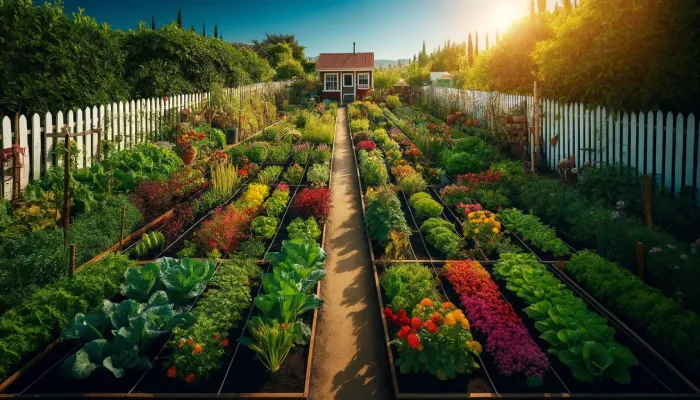
However, the row garden layout also has some drawbacks. It can require more space than other layouts, and the wide pathways may lead to wasted growing areas. Additionally, this layout may not be the most efficient for smaller gardens or urban settings where space is at a premium. To maximize productivity in a row garden, consider using companion planting techniques to exploit the natural relationships between different plants. For instance, planting marigolds alongside vegetables can help deter pests, while beans can provide nitrogen to the soil, benefiting neighboring plants.
Square Foot Gardening Layout
Square foot gardening is a method designed to maximize space and productivity, making it ideal for small gardens or urban environments. This layout divides the garden into a grid of square foot sections, each measuring one foot by one foot. Each square is planted with a specific number of plants based on size and growth habits. For example, a square might contain sixteen radishes, nine onions, four lettuce plants, or one tomato plant. The main advantage of square-foot gardening is its efficiency. By using a precise planting system, gardeners can maximize the use of their space and minimize waste.
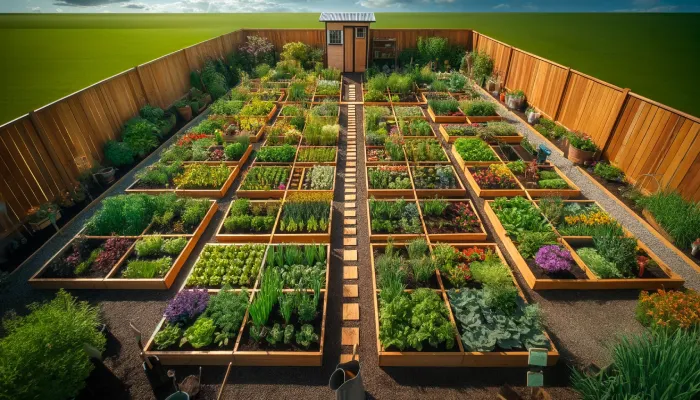
This layout also simplifies the process of crop rotation and succession planting, as each square can be replanted with a different crop after the initial harvest. To create a square-foot garden, build a raised bed and divide it into a grid using string or wooden slats. Fill the bed with a high-quality soil mix, such as a blend of compost, peat moss, and vermiculite, which provides excellent drainage and nutrient availability. When planting, follow spacing guidelines specific to each type of plant to ensure healthy growth and avoid overcrowding.
Raised Bed Garden Layout
Raised bed gardening involves growing plants in soil that is elevated above ground level, usually within a wooden or stone frame. This layout offers several advantages, including improved soil control, better drainage, and easier access for planting and harvesting. Raised beds are particularly beneficial for areas with poor or compacted soil, as they allow you to create an optimal growing environment by filling the beds with high-quality soil and compost. Additionally, the elevation of the beds can help reduce the risk of soil-borne diseases and pests.
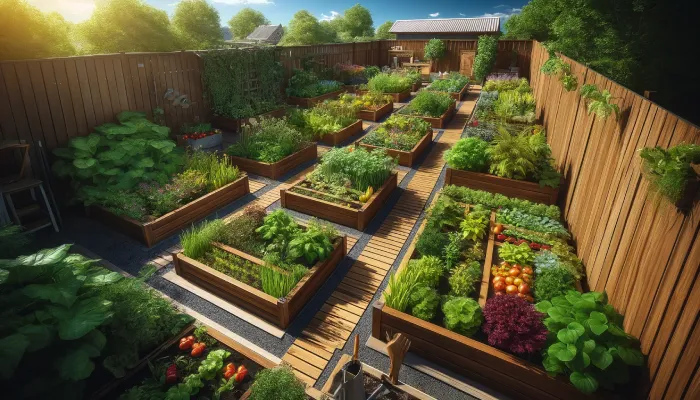
When designing a raised bed garden, consider the size and height of the beds. A standard size is 4 feet by 8 feet, with a height of 12 to 18 inches. This size allows for easy access to the center of the bed from all sides without stepping on the soil. Arrange the beds with enough space between them to accommodate pathways, ensuring comfortable movement and maintenance. To build a raised bed, use untreated lumber or other materials that are safe for growing edible plants. Fill the beds with a well-draining soil mix and amend with compost or other organic matter as needed. Raised beds can be used for a variety of plants, including vegetables, herbs, and flowers.
Container Garden Layout
Container gardening is an excellent option for those with limited space or gardeners who want the flexibility to move plants around. This layout involves growing plants in pots, planters, or other containers rather than directly in the ground. Container gardening offers several benefits, including better control over soil quality, improved drainage, and the ability to grow plants in areas where in-ground gardening is not feasible, such as patios, balconies, or rooftops. Grouping plants with similar water and light requirements can simplify care and maintenance. Additionally, consider using vertical space by placing containers on shelves or hanging baskets.

When selecting containers, choose ones with adequate drainage holes to prevent waterlogging and ensure healthy root growth. The container size should be appropriate for the type of plant you intend to grow; larger containers are needed for deep-rooted plants like tomatoes, while smaller pots can suffice for herbs or annual flowers. Arrange containers in a way that maximizes sunlight exposure and allows for easy access to all plants. Regularly monitor the moisture levels in containers, as they can dry out more quickly than in-ground gardens. Fertilize as needed to replenish nutrients that may be leached out during watering.
Vertical Garden Layout
Vertical gardening is an innovative approach that involves growing plants upward rather than outward, making it ideal for small spaces and urban environments. This layout uses trellises, green walls, and stacked planters to support climbing or cascading plants. Vertical gardening offers several benefits, including efficient use of space, improved air circulation, and easier harvesting. Additionally, vertical gardens can add a visually striking element to your outdoor space. To create a vertical garden, select a suitable structure based on your available space and the types of plants you want to grow.

Trellises and arbors are excellent for supporting climbing plants like beans, peas, and cucumbers, while green walls or living walls can be planted with a variety of herbs, flowers, and small vegetables. When planning your vertical garden, consider the light requirements of your plants and position the structure accordingly. Ensure that the support system is sturdy enough to handle the weight of the plants as they grow. Vertical gardening also requires regular watering, as plants grown in vertical arrangements can dry out more quickly. Installing a drip irrigation system or using self-watering containers can help maintain consistent moisture levels.
Permaculture Garden Layout
Permaculture gardening is a sustainable approach that creates a self-sufficient and regenerative ecosystem. This layout emphasizes using native plants, natural resources, and organic practices to build a garden that mimics the balance and diversity of natural ecosystems. Permaculture principles include designing for energy efficiency, maximizing biodiversity, and minimizing waste. A key element of a permaculture garden is the use of zones, where plants and activities are organized based on their frequency of use and care requirements. For example, high-maintenance plants like vegetables and herbs are placed closer to the home, while lower-maintenance areas like orchards or woodlands are situated further away.

Another vital aspect is integrating water management systems, such as rainwater harvesting, swales, and ponds, to enhance water efficiency and support wildlife. Companion planting and polycultures are also commonly used in permaculture gardens to promote beneficial interactions between plants, improve soil health, and reduce pest problems. By adopting permaculture principles, gardeners can create a resilient and productive garden that supports both the environment and human needs.
Companion Planting Layout
Companion planting is a gardening technique that involves growing certain plants together to benefit each other through various interactions. This layout supports the natural relationships between plants to promote growth, deter pests, and improve soil health. For example, planting marigolds alongside tomatoes can help repel nematodes, while basil can enhance the flavor of tomatoes and deter aphids. Companion planting can be incorporated into any garden layout, including traditional row gardens, raised beds, and square-foot gardens. When planning a companion planting layout, research the beneficial relationships between different plants and arrange them accordingly.
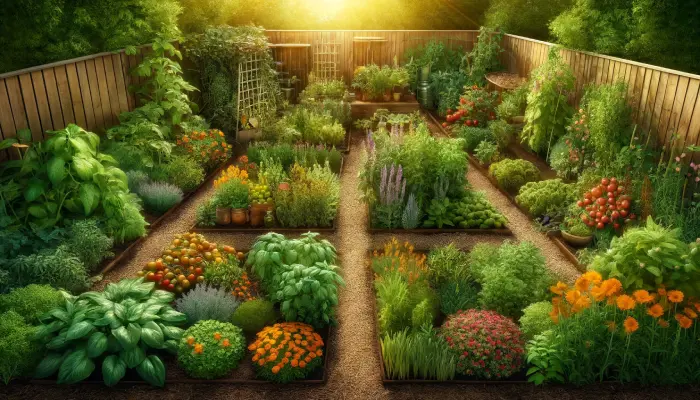
Consider factors such as growth habits, light requirements, and water needs to ensure compatibility. Companion planting can also involve the use of trap crops, which are plants that attract pests away from the main crops, and cover crops, which improve soil fertility and structure. By designing a garden that takes advantage of these natural plant relationships, gardeners can reduce the need for chemical inputs, improve plant health, and increase overall garden productivity.
Edible Landscaping Layout
Edible landscaping combines the principles of ornamental landscaping with the functionality of growing food. This layout integrates edible plants such as fruits, vegetables, and herbs into the overall design of your garden, creating a visually appealing and productive space. Edible landscaping offers several benefits, including fresh, homegrown produce, balanced biodiversity, and colorful flowers and foliage appeal. When designing an edible landscape, consider the growth habits and visual characteristics of different plants. For example, blueberry bushes can be used as decorative hedges, while trellised grapevines can provide shade and visual interest.

Herbs like rosemary and thyme can be planted along pathways for easy access and pleasant fragrance. Incorporate a mix of annual and perennial plants to ensure continuous harvest throughout the seasons. Pay attention to the thoughtful arrangement of plants, combining different textures, colors, and heights to create a harmonious and attractive garden. By blending beauty with functionality, edible landscaping allows you to enjoy both the visual and culinary rewards of your garden.
Summary
Creating a well-planned garden layout is essential for maximizing space, productivity, and enjoyment. Each garden layout option offers unique benefits. Traditional row gardens provide a straightforward and orderly approach, while square-foot gardens optimize space for smaller areas. Raised beds provide improved soil control and accessibility, and container gardens are perfect for urban settings and those with limited space. Vertical gardens make efficient use of vertical space, and permaculture gardens promote sustainability and self-sufficiency. Companion planting leverages natural plant relationships for better growth and pest control, and edible landscaping combines beauty with functionality. With careful planning and thoughtful design, you can create a productive and beautiful garden that meets your needs.
FAQ
Q1: What is the best garden layout for a small space?
A1: Square-foot gardening and container gardening are excellent options for small spaces. These layouts maximize the use of available space and allow for efficient planting and maintenance.
Q2: How do I decide which layout is best for my garden?
A2: Consider factors such as the size and shape of your garden area, sunlight exposure, soil type, and your gardening goals. Assess your space and choose a layout that best fits your needs and environment.
Q3: Can I combine different garden layouts in one space?
A3: Yes, combining different layouts can improve the functionality and overall attractiveness of your garden. For example, you can integrate raised beds with vertical gardening or incorporate container gardens into a traditional row garden.
Q4: What are some common mistakes to avoid when planning a garden layout?
A4: Common mistakes include overcrowding plants, ignoring sunlight requirements, poor soil preparation, and lack of proper drainage. Plan carefully, consider plant spacing, and ensure your garden meets the needs of your chosen plants.
Q5: How do I maintain my garden layout throughout the growing season?
A5: Regularly monitor your garden for watering needs, pest issues, and plant health. Trim and harvest plants as needed and replenish soil nutrients with compost or organic fertilizers. Stay proactive to keep your garden thriving.
